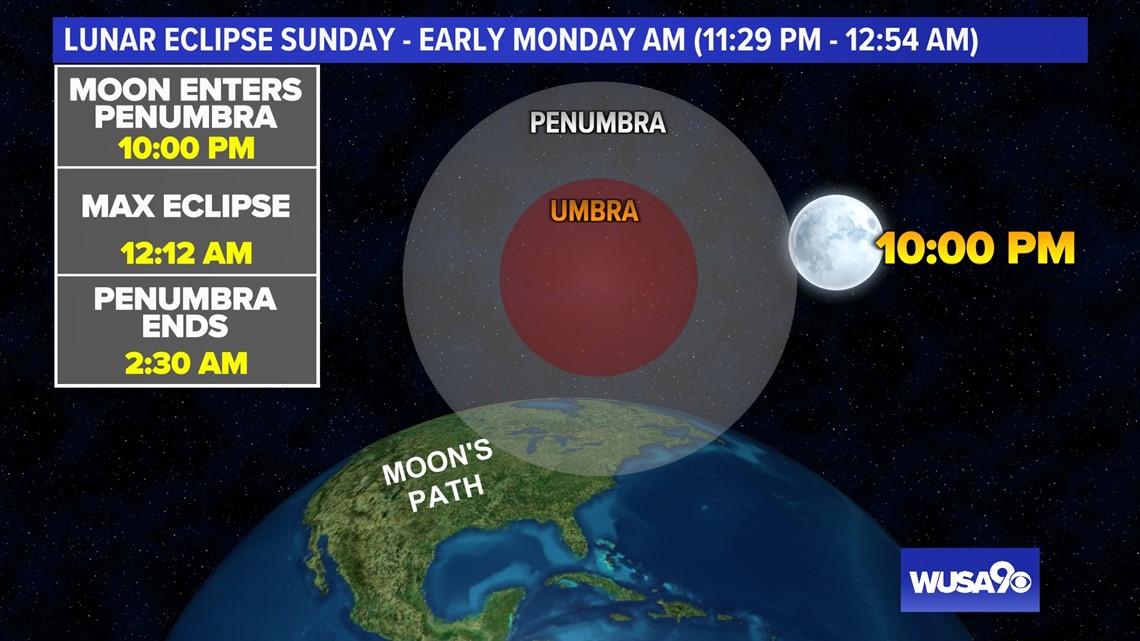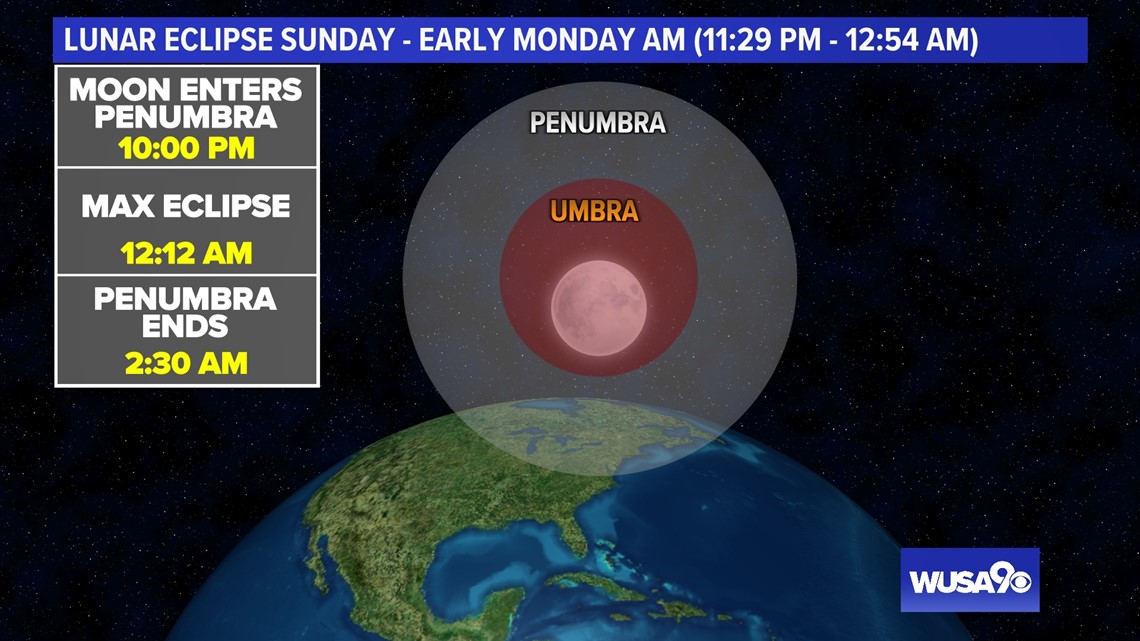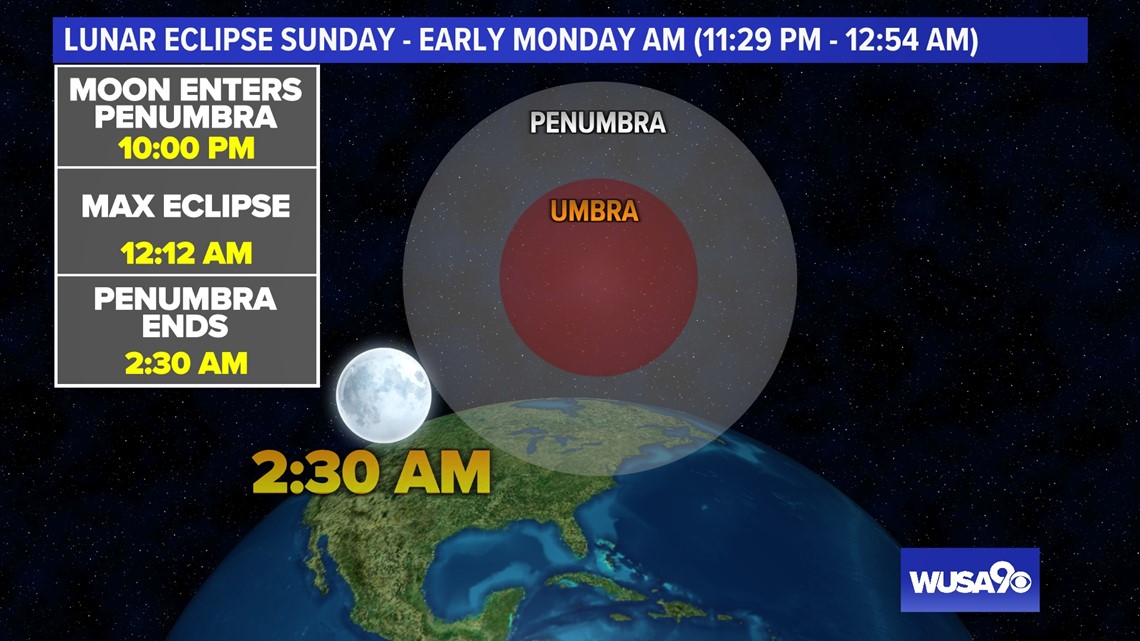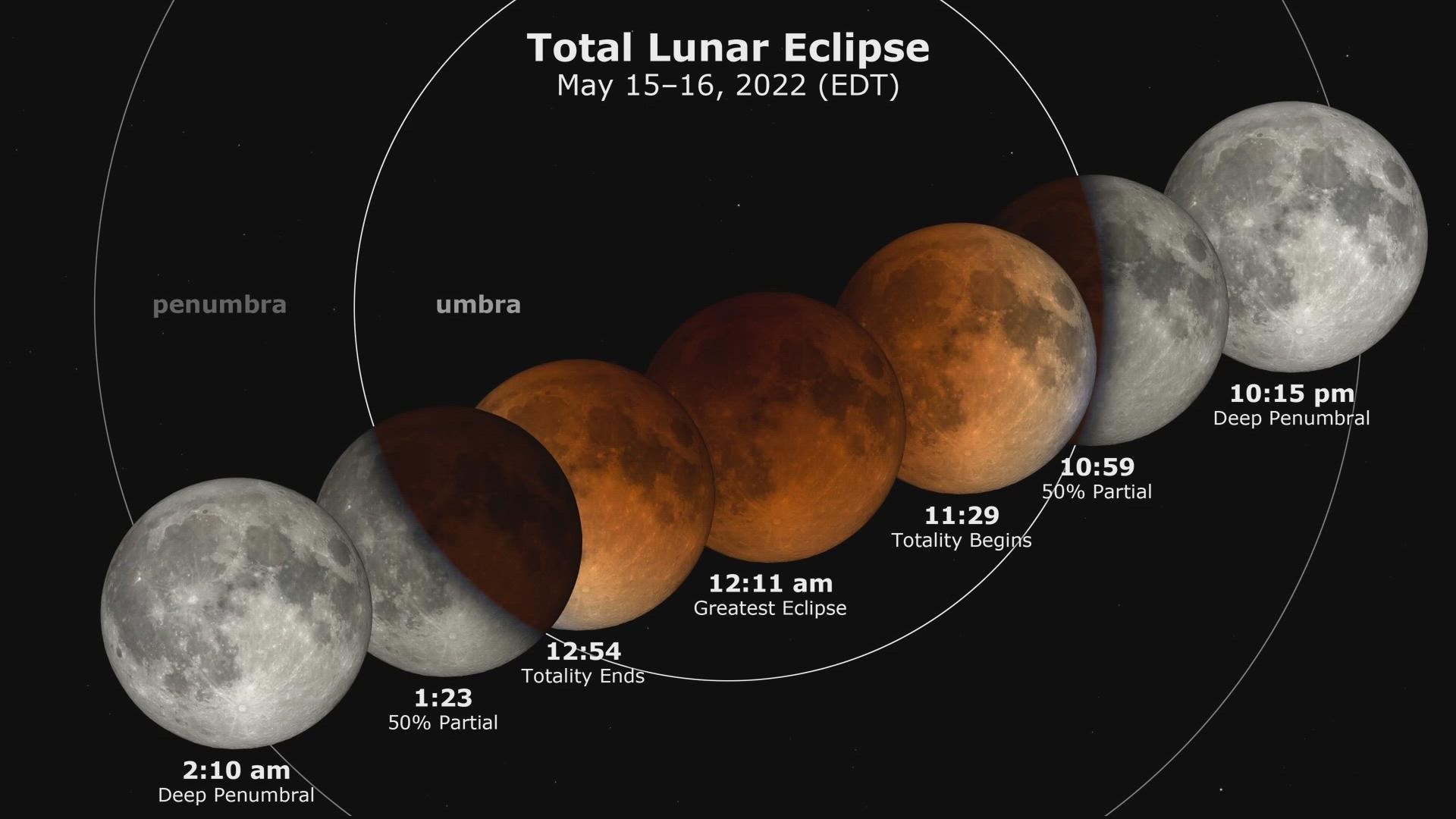WASHINGTON, D.C., USA — When the sun, earth and moon are in alignment we are treated to a lunar eclipse. Sometimes they are partial but sometimes, like the one this Sunday night, they are total.
On average, we can see a total lunar eclipse once just under every three years. If the weather cooperates here's what we will see.


Around 10 p.m. the moon will just be entering the partial shadow, the penumbra. Until a bit after 10 p.m. nothing will be noticeably different.


The full eclipse begins around 11:29 p.m. as the moon enters the umbra.


The maximum total eclipse occurs at 12:12 a.m. The full eclipse ends at 12:53 a.m.


The moon exits the penumbra at 2:30 a.m. Monday.
The bottom line is the best viewing will be between 11:29 p.m. and 12:54 a.m. For best viewing move away from street lights and tall trees.
READ NEXT:
WATCH NEXT: Partial solar eclipse seen in D.C. region
Here's a look at a brief view of a partial solar eclipse in the D.C. region Thursday morning.

